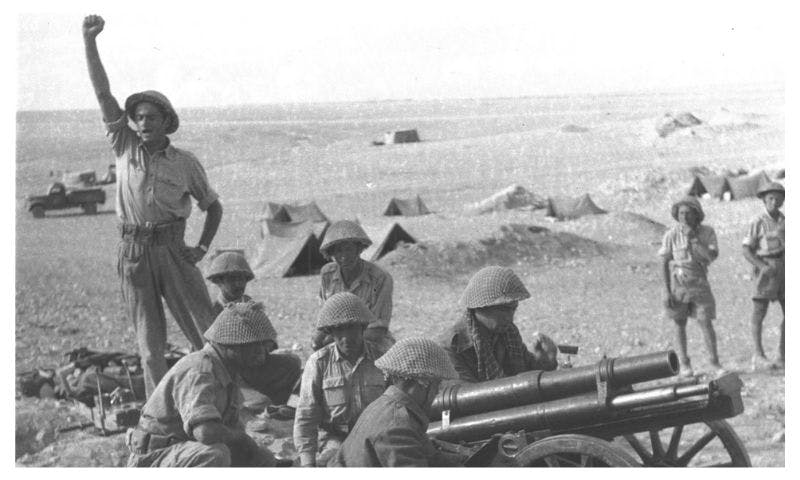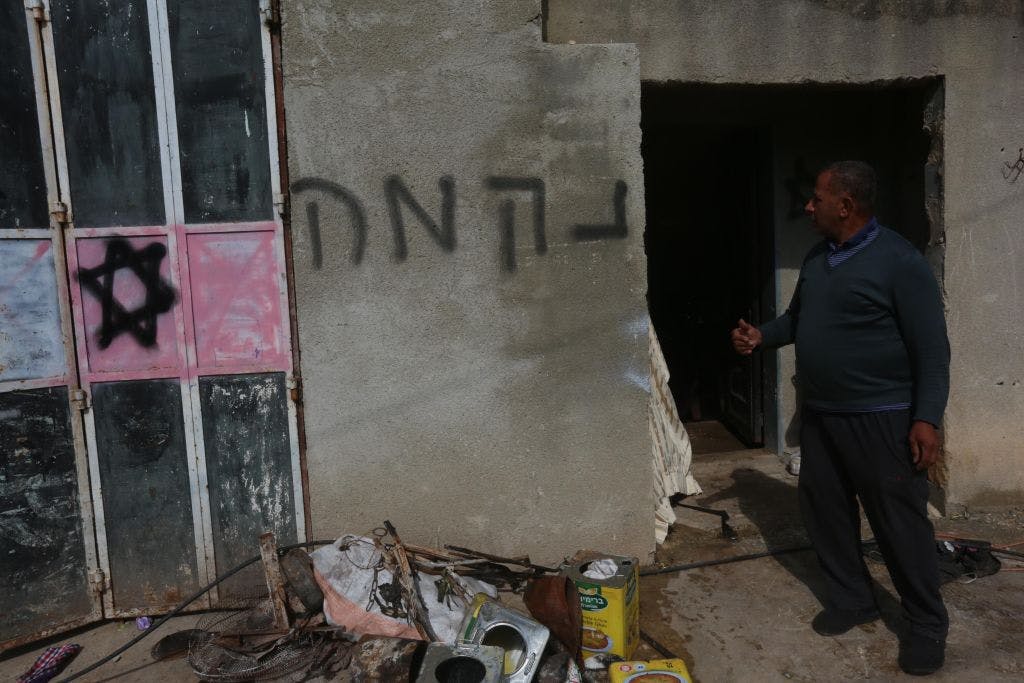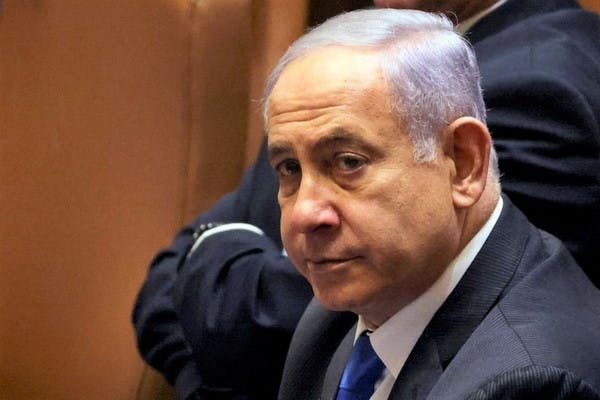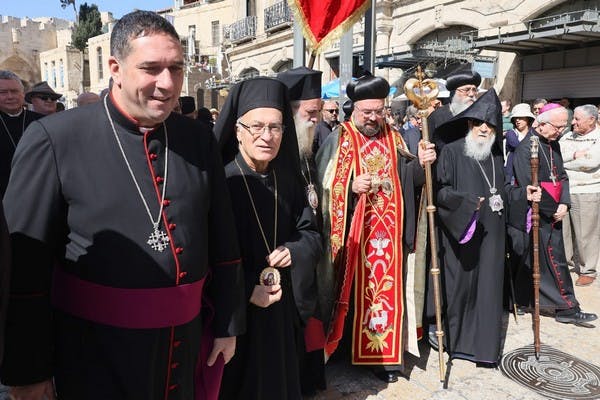Published: 25 April 2023
Last updated: 5 March 2024
The meta-narratives of entitlement, enmity and victimhood have prevented Israel from confronting the complex truths of the War of Independence, writes JEREMIE BRACKA.
On this Israeli Independence Day, as the nation enters its seventh decade, no conceivable horizon exists for reconciling with history. Despite the significance of 1948, or perhaps because of it, debating the past remains largely taboo. Politically, too, the passage of time has done little to relax the grip of official memory over national identity. But after 75 years, cracks are beginning to appear. Most importantly, Israeli civil society is redefining the boundaries of legitimate debate and should continue to do so.
Swept under the Rug
Facing 1948 is no small feat. Even during the golden era of peace-making, there were few attempts to address the conflict’s origins and historical footprints. Both Oslo 1 (Declaration of Principles) and Oslo II (Interim Agreement 1995) expressly deferred the Palestinian refugee issue until final negotiations. Any engagement with the past was simply postponed to a future, unspecified stage.
The accords failed to mention efforts to compensate or acknowledge refugees nor consider any symbolic measures to address the Palestinian right of return. While some peace plans footnoted 1948, none sought to grapple with the psychological and historical barriers impeding the parties. Unsurprisingly, Oslo’s demise is commonly attributed to the intractability over 1948.
What is undisputed is that the 1948 hostilities, which began in the wake of the UN partition plan, and erupted into full-scale war in May 1948, resulted in the exile of much of Arab Palestine. Everything else remains an open wound. Both sides, Israeli and Palestinian, traditionally ascribe responsibility for the mass displacement entirely to the other. Like borders and bullets, remembering and forgetting are also weapons on the national battlefield.
First Cracks in the Israeli myth of ‘1948’
But war stories can change over time. In the 1990s, Israeli scholarship challenged official history. Benny Morris was the first Israeli historian to admit that mass expulsions of Palestinians occurred in 1948 and to refute the claim that Arab leaders ordered the Palestinians to flee and clear the way for impending armies. Dubbed the “New Historians”, they raised a wide-ranging debate that spilled over from scholarly journals and academic conferences into the public domain.
The Oslo process fanned debates about 1948. But after the second Intifada, Israeli society became even more unwilling to reassess the history that gave birth to the state. Even mainstream Israeli human rights NGOs have tended to refrain from addressing 1948. Their focus is on 1967 and documenting human rights violations in the occupied Palestinian territories. In sum, the legacy of 1948 does not constitute a significant element of the human rights discourse in Israel.
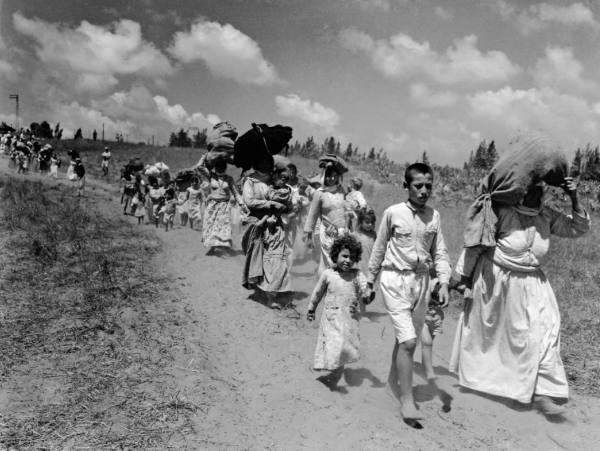
Narratives and National Identity
Why is 1948 impenetrable? For starters, it is deeply embedded in national identity and meta-narratives of entitlement, villain, and victimhood. While the Palestinians recount a story of dispossession and catastrophe based on the Nakba, the Israelis recall a heroic War of Independence and symbolic compensation for the Holocaust. Both nations have their own cosmic catastrophes, and both draw on a strong memory of victimhood in what is perceived as an existential struggle.
Arguably, every event since 1948, from Oslo to Gaza disengagement, is viewed through the same nationalistic and moral prism. For Palestinians since 1967, the Israeli occupation of the West Bank (and formerly of the Gaza Strip), which controls the daily lives and rights of Palestinians, coupled with the expansion of Jewish settlements, is a perennial reminder of the humiliation and dispossession of 1948. For Israelis, the sense of Jewish victimhood and isolation was only exacerbated by the subsequent Arab-Israeli wars, the regional rejection of Israel’s right to exist, and by Palestinian terrorist attacks against Israelis and Jews worldwide.
The meanings and implications, derived from 1948, strike at the very heart of both parties’ sense of national self. What for Palestinians is a historic right to return, is for Israeli Jews a full-frontal attack on the Jewish state’s legitimacy and survival. In this way, 1948 is as much about a clash of political narratives, as it is a factual debate over entitlement to land.
Weaponising Victimhood
Both Israelis and Palestinians have drawn on 1948 to cope with the conflict and contribute to ongoing struggle. The Palestinian Authority has consciously cultivated the Nakba (catastrophe) memory in schools and demonstrations. Israeli laws and official institutions reproduce denial of the Palestinian past and its role in 1948.
Symbols and rituals of suffering have become what French historian Pierre Nora calls “site of memory” (lieux de memoire), creating a continuum between the past and present. Like the Holocaust, the Nakba is not merely a passing historical event, but an ongoing process of victimisation that heightens threat perceptions and bolsters Palestinian national claims.
Tragically, there is an ironic symmetry to each nation’s exclusive claim to victimhood and refusal to acknowledge the national trauma of the other. As Ata Qaymari wrote, “For many Palestinians, the Holocaust seems an excuse and a camouflage for the atrocities … which Israel thrusts upon them.” In Israel, the incomparable trauma of the Holocaust appears to blind Israelis to the plight of Palestinians, while the notion of Palestinian return is a euphemism for calls to destroy the Jewish state.
‘The Nakba Law’
The bitter struggle over history is reflected in Israel’s legal and official memory. In recent decades, particularly under Netanyahu governments, strident attempts have been made to revive traditional Zionist narratives of 1948. In 2009, the Israeli Ministry of Education ordered the removal of any reference to the Nakba from Israeli-Arab high school textbooks. In Jewish-Israeli political circles, there is a growing trend of denying the Nakba as a sort of conservative backlash to the 1990s.
On the legal front, the Knesset passed an amendment in March 2011 empowering the Minister of Finance to reduce monetary support for bodies or institutions such as schools, universities or local authorities that fund events or actions marking the date of Israel’s establishment as a day of mourning, or undermining the existence of Israel as a Jewish and democratic state. This amendment, known as “the Nakba Law”, mirrors the current political trajectory against critical engagement with 1948.
Ultimately, the Nakba Law threatens any institution – even an Arab-Israeli one, with loss of state funding if it sponsors a Nakba-related event. Given that one in five Israelis is Arab-Israeli, the law effectively denies a sizeable minority from freely expressing its own collective memory of 1948.
By targeting commemoration, the law limits the space for open discussion about the past and Israeli accountability. Paradoxically, the Nakba Law has also raised awareness in mainstream discourse. Despite official efforts to erase it, the Nakba is mentioned more and more often in Israel.
The Female form of Remembering
To this end, Israeli NGO Zochrot (the female form of “remembering” in Hebrew, which in itself refers to a break with the ordinary, masculine form of speaking), was established in 2002. It actively promotes awareness of 1948 and Israeli accountability among the broader Israeli-Jewish public.
The movement was established in the belief that the ongoing denial of the Nakba obstructs reconciliation between the two nations. In practical terms, Zochrot distributes informational resources, organises memorial events and historical tours. One of its signature activities is signposting around Israel to mark destroyed Palestinian villages from 1948.
In 2014, on the eve of Israeli Independence Day, Zochrot launched the iNakba app, which, through a mobile phone GPS tool, allows users to locate and learn about hundreds of Palestinian localities destroyed during 1948.
Zochrot also organises an annual return march. It has been held every year since 1998 on Israel’s Independence Day; thousands of Palestinian citizens of Israel, together with Israeli-Jews, march to one of the Palestinian displaced villages of 1948. Zochrot is on the fringes but its activities rupture and disrupt official narratives. In this way, it serves as a counterweight to current trends of forgetting and memory regulation.
Grieving together
The Joint Israeli-Palestinian Memorial also challenges exclusive victimhood narratives. Now in its 18th year, bereaved Israeli and Palestinian families and former soldiers annually commemorate loss on both sides of the conflict. The ceremony is hosted by the Israeli-Palestinian Bereaved Families Forum and Combatants for Peace.
Since 2006, it has grown exponentially. In 2019, despite efforts by the Israeli Minister of Defence to block Palestinian entry to attend the ceremony, 8000 people attended (almost double the previous year). In 2022, more than 300,000 people participated.
The choice to hold the event on Israel’s Memorial Day is significant. For Israelis, Memorial Day is a sacred occasion, one focused solely on mourning the country’s fallen soldiers and victims of terrorism. Traditionally, it reinforces cultural narratives of pain, victimhood, and hopelessness.
The very notion of Israelis and Palestinians grieving together, and acknowledging each other’s pain, is game changing. It sends a message to both sides about the power of pluralising the past. According to the hosts: “In mourning together, we seek not to equate narratives, but rather transform despair into hope and build bridges of compassion. “
Past events have faced counter demonstrations and even threats of violence from right-wing activists. The theme for the 2023 ceremony is “WE ACKNOWLEDGE: bringing to light what has already been known but was suppressed, denied, or muted.”
Reckoning as a bridge to reconciliation
“The past is never dead. It's not even past,” William Faulkner wrote. These words profoundly resonate in Israel/Palestine 75 years on. No doubt, many of the anxieties and fears permeating these two warring nations are traceable to the conflict’s genesis.
Rather than obstructing reconciliation, a meaningful and nuanced accounting of 1948 may be the discursive and cognitive bridge required. For example, the ‘Land for All’ initiative embodies a new vision for Palestinian-Israeli peace by stating that “the resolution to the conflict cannot ignore or evade the ‘1948 question’”.
The legacy of the New Historians and civil society demonstrates Israeli and Palestinian capacity to reckon with the past. While the current political climate makes this harder, it is part of a necessary process of transforming cultures of denial and victimhood into ones of dialogue and acknowledgement.
Photo: Israeli soldiers of the Negev Battalion in the 1948 Arab-Israeli War (Hugo Mendelson, National Photo Collection of Israel)
